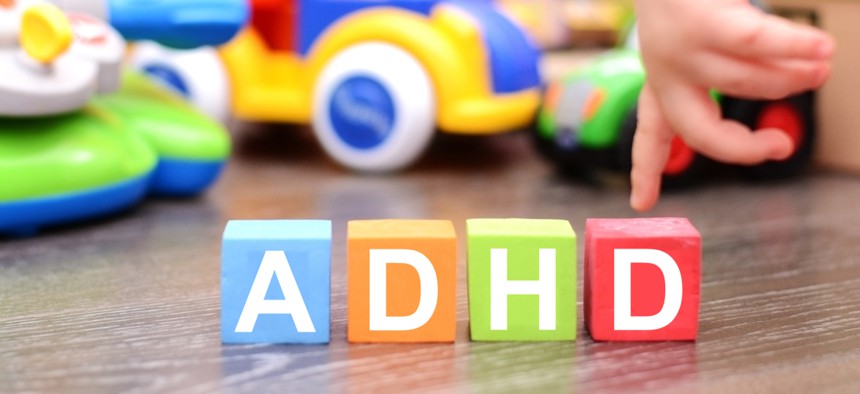FDA Approves First Device to Treat Kids with ADHD

Eviart/Shutterstock.com
A nerve-stimulating medical device sends therapeutic signals to parts of the brain thought to be involved in ADHD.
The Food and Drug Administration approved marketing Friday for a nerve-stimulating medical device to treat childhood attention deficit hyperactivity disorder, or ADHD.
This move marks the first time the federal agency has ever granted marketing authorization to a non-drug treatment for the disorder.
“This new device offers a safe, non-drug option for treatment of ADHD in pediatric patients through the use of mild nerve stimulation, a first of its kind,” Carlos Peña, director of the Division of Neurological and Physical Medicine Devices in the FDA’s Center for Devices and Radiological Health said in a statement.
“Today’s action reflects our deep commitment to working with device manufacturers to advance the development of pediatric medical devices so that children have access to innovative, safe and effective medical devices that meet their unique needs,” he said.
Those who suffer from ADHD generally have chronic or long-lasting symptoms of inattention and/or hyperactivity-impulsivity that impair their ability to function. The disorder is common: Approximately 6.1 million children between the ages of two and 17 were diagnosed with ADHD in 2016, according to a report from the Center for Disease Control and Prevention.
The new prescription-only device recently approved by the FDA is called the Monarch external Trigeminal Nerve Stimulation, or eTNS, System. It’s marketed by the California-based bioelectronics and life sciences company, NeuroSigma.
Meant for patients between seven and 12 years old who are not currently prescribed ADHD medication, the Monarch eTNS is about the size of a cell-phone and is meant to be used at home and under the supervision of a caregiver while users are asleep.
The device is connected by wire to a small patch that adheres to patients’ foreheads, right above their eyebrows. The Monarch eTNS generates a low-level electrical pulse to the branches of a nerve that sends therapeutic signals to the parts of the brain thought to be involved in ADHD.
The stimulation causes a tingling sensation on patients’ skin.
“While the exact mechanism of eTNS is not yet known, neuroimaging studies have shown that eTNS increases activity in the brain regions that are known to be important in regulating attention, emotion and behavior,” the FDA said in its announcement.
In a trial conducted on 62 children with moderate to severe ADHD, the FDA found that those who used the device saw “significant improvement” in their ADHD symptoms compared to those who used a placebo device. The agency also noted that there are no serious adverse events associated with the use of the device, though some common side effects include drowsiness, headaches and teeth clenching, among others.






